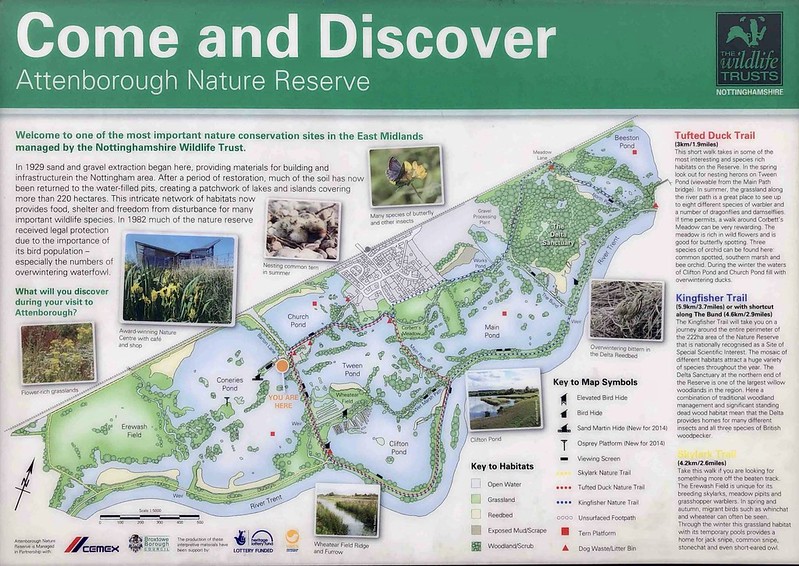There’s something special about stepping into nature in the early morning. As the world wakes up, the air is fresh, and the only sounds are birdsong and the occasional rustle of leaves. While most people were still lingering over breakfast, I arrived early for an RSPB Local Group field trip, enjoying those precious moments of calm before our group of twenty gathered at the Attenborough Nature Reserve car park, ready for a day of birdwatching.
From the outset, the conditions looked perfect. A clear morning with just a little cloud and a low chance of rain before the storm and severe weather warning forecast for the following day made for ideal bird-spotting opportunities. The quiet anticipation was mixed with the familiar chatter of people catching up. As we set off along the well-trodden paths of the reserve, we had no idea just how rewarding the day would be.
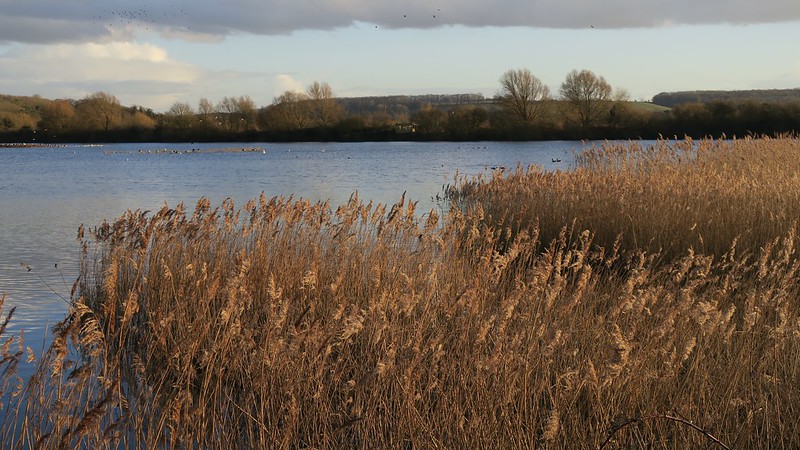
We made slow progress along the track, stopping to observe and record what we saw. People pointed out their sightings even before we reached the turn to Tower Hide, as the first glimpses of wildlife came thick and fast. A heron flew overhead, mallards dabbled in the water, and a cormorant perched nearby, its yellow markings at the edge of its mouth glowing in the morning light. Soon after, we were treated to the sight of tufted ducks, their black-and-white plumage striking against the still water, while a great crested grebe performed a dance, beginning its elegant mating ritual.
Then came the first goldeneye of the day, spotted by others in the group. Further ahead, we noticed a buzzard sitting on an owl box, its back turned to us. Through one of the group’s telescopes, we got a fantastic close-up view. Later, from near the closed Tower Hide, we saw it again, this time facing us, proudly displaying what one of the group called its “mayoral chain.”
A flash of white caught our eye on the opposite bank. A great white egret stood with its yellow beak bright against the winter landscape. A reed bunting flitted through the undergrowth, its black head and streaked brown plumage blending in perfectly. Then five shovelers soared overhead, their broad bills catching the light, and a male chaffinch fed on some food that others had put out.
Among these sightings were plenty of our usual visitors: robins, blue tits, great tits, and more.
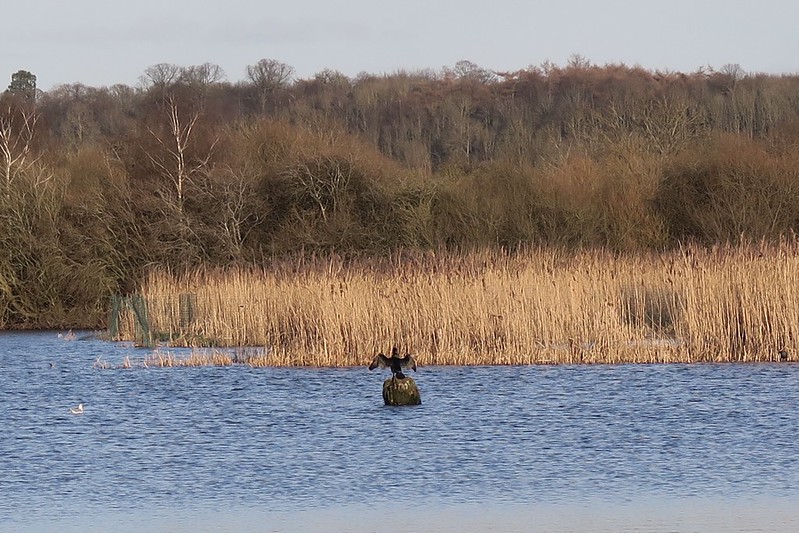
With a large group, not all of us made it into Kingfisher Hide, so a few of us stood outside, peering around the side, catching glimpses of cormorants, shovelers, coots, and lesser black-backed gulls.
Just as we were starting to head back towards the Visitor Centre for lunch, excitement in the group spiked. Another group had just spotted a scaup further along the river trail, and we wasted no time heading to the hide where it had been seen.
Sure enough, as soon as we arrived, there it was, a scaup, distinguishable from the similar tufted duck by the subtle difference in its back colouring. It was a fantastic sighting, accompanied by goldeneyes, little grebes, Egyptian geese, and greylags. The goldeneyes’ were busy doing their ‘head throw kick’ display. The energy of the group was contagious in this lovely open hide overlooking Clifton Pond, close to the River Trent.
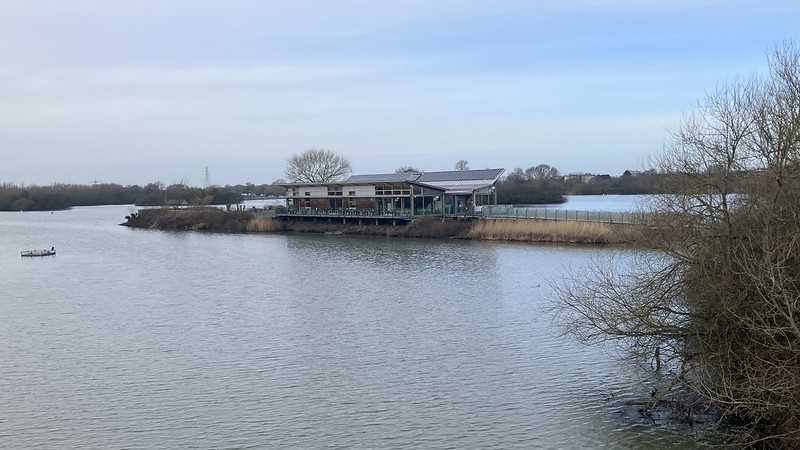
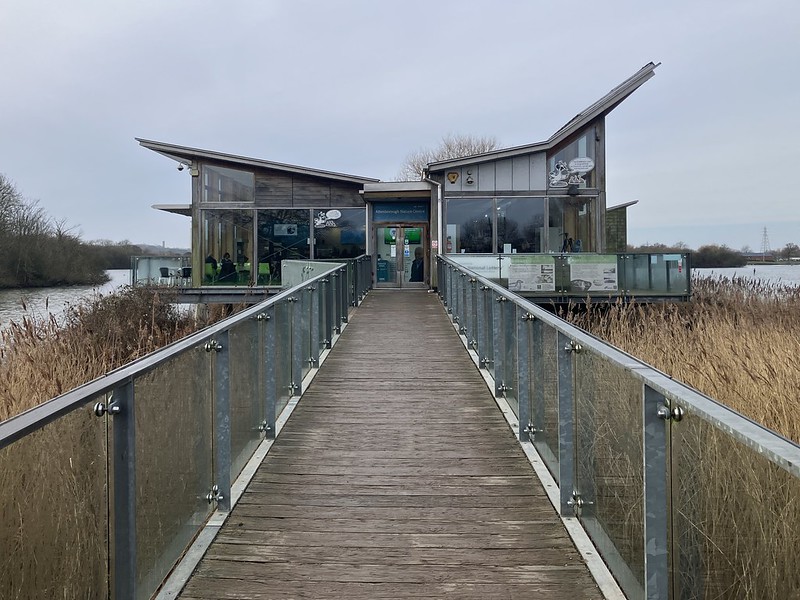
Back at the Visitor Centre, we enjoyed a well-earned break, swapping stories and comparing notes over sandwiches and hot drinks at the picnic benches outside.
After lunch, we headed towards the church, hoping to spot a rare gull that had been reported earlier, though luck wasn’t on our side. However, as we followed the river path, new sightings rewarded our perseverance.
More of our usual species appeared, but the wigeons bobbing gently on the surface stood out to me. Then a little egret stood out against the water’s edge. Further along, we paused to observe a flock of birds high up in a tree, initially thinking they were starlings. A closer look revealed a mix, including fieldfares, winter visitors from Scandinavia, mingling with the starlings.
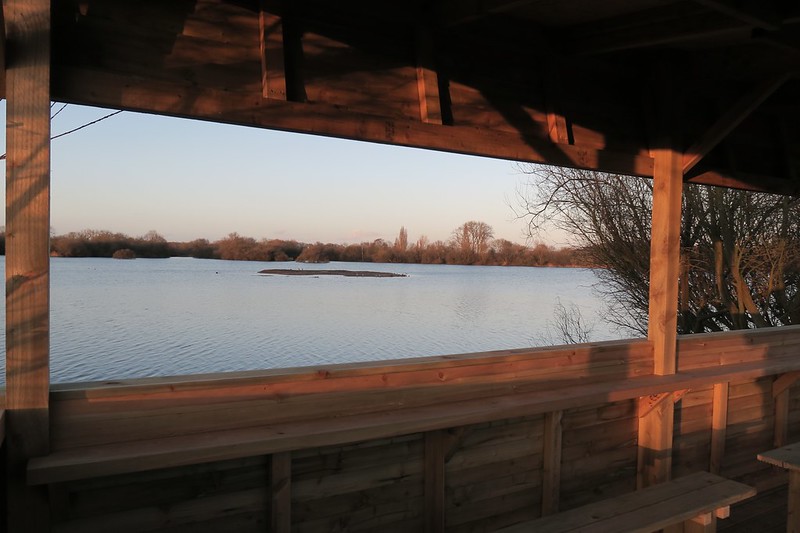
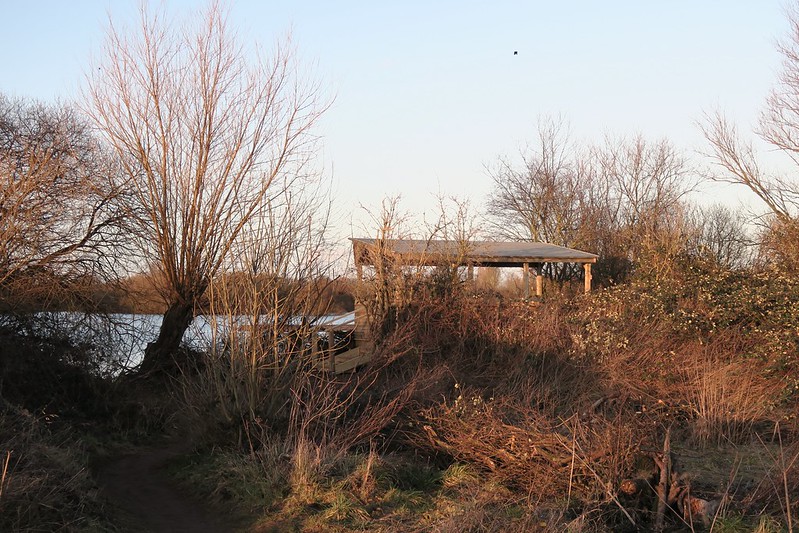
As we looped back to where we had been before lunch, we stopped at the hide overlooking Clifton Pond again, where we spotted a group of snipe. Their camouflage blended so perfectly with the island vegetation that it was only when they moved that I could clearly pick them out. Just behind them stood a lone oystercatcher, its bold black-and-white plumage and long orange-red bill making it instantly recognisable.
A large black bird prompted debate. As I arrived, I saw one of them fly across to the right, and it soon became clear that there were actually two birds: one a raven and one a crow. The first bird took off and flew over the river, while the second flew to the right. A detailed discussion followed as the group carefully considered their size, shape, and flight pattern, with the distinctive tail of the second bird confirming it as a crow. Later, with additional input from the wildlife group in the new hide, who had also been watching, we concluded that we had, in fact, seen both: a raven first, followed by a crow.
As most of our group contemplated headed off for the day, there was a brief moment of disappointment when we discovered the café was closed. Fortunately, I had an extra flask of hot water in my car, a lifesaver on a cold day. Refueled, I set off for one final loop around the reserve, this time on my own again.
Walking along a muddy trail through the wet marsh path, I found it lovely and quiet except for a couple with their dog. The late-afternoon light was golden, with birds calling softly from the trees just out of sight. It was the perfect moment to reflect on the day. The sheer variety of species seen, the joy of learning from fellow birdwatchers, and the simple pleasure of being out in nature all made it one to remember.

As I finally returned to the car park, I noticed a small gathering of people peering across the water. Looking up, I saw them watching a starling murmuration, swirling in breathtaking synchrony. It was a final, beautiful reminder of nature’s magic before I headed home.
By the end of the day, our group’s master list had surpassed 50 species, an incredible tally for a single outing. Whether people had come hoping for a rare sighting, a peaceful walk, or the chance to learn from others, there was something for everyone. For me, it was another powerful reminder of why these group outings are so valuable. Not just for the birdwatching but for the camaraderie, the shared discoveries, and the opportunity to deepen my knowledge of the natural world.
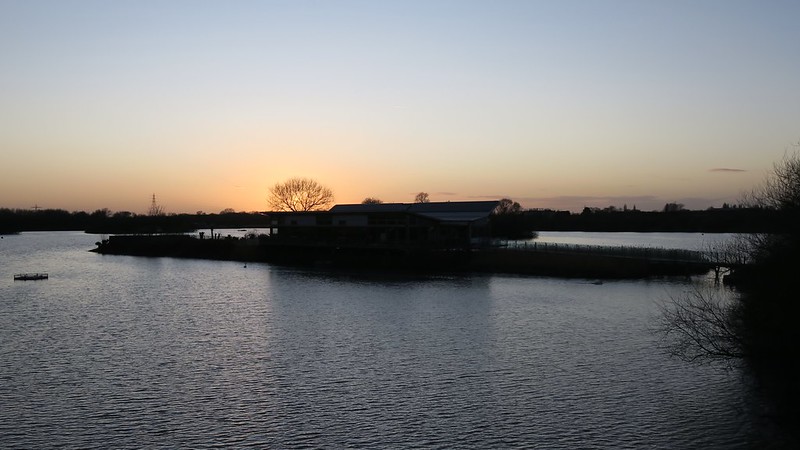
Would I have spotted even half as many birds if I had visited alone with a field guide in hand? Probably not. That is the beauty of joining a local nature group. Every outing is a chance to see the world through different eyes, to share knowledge, and to leave with a little more understanding than before.
